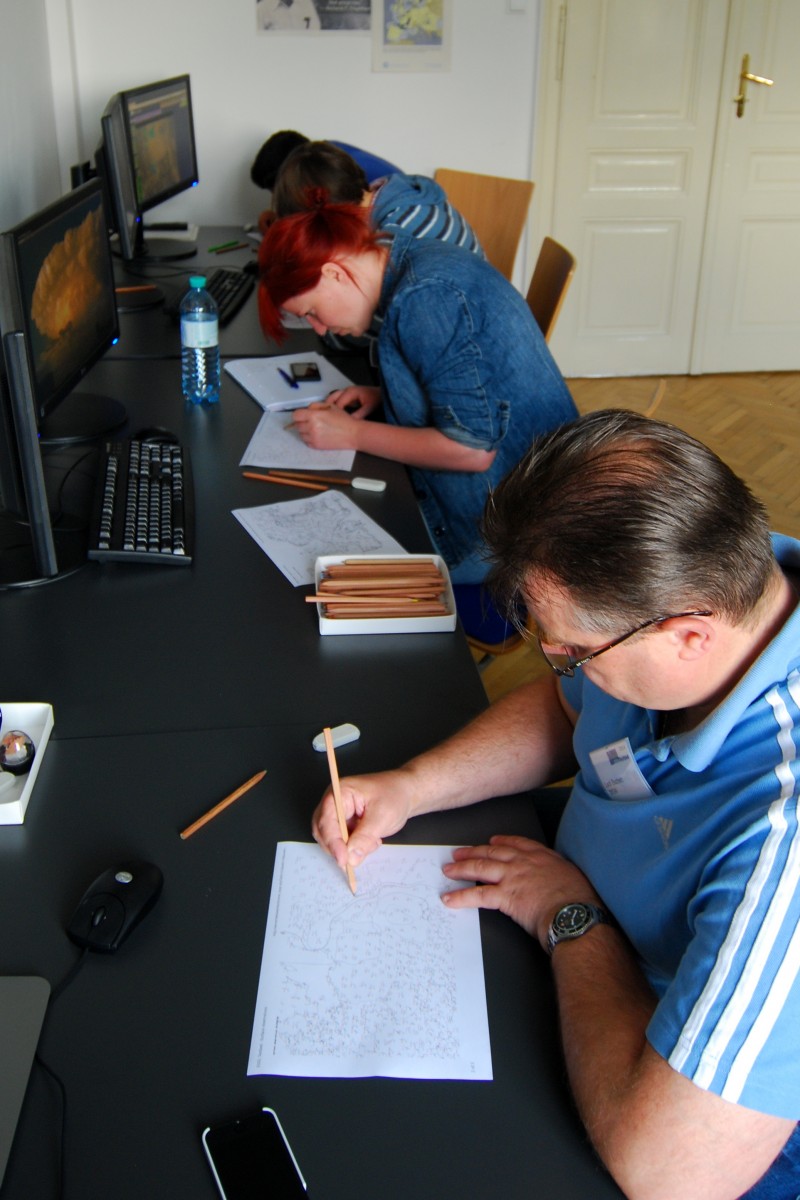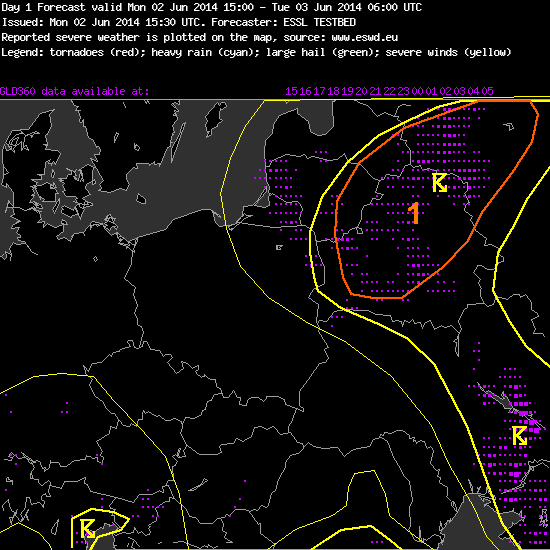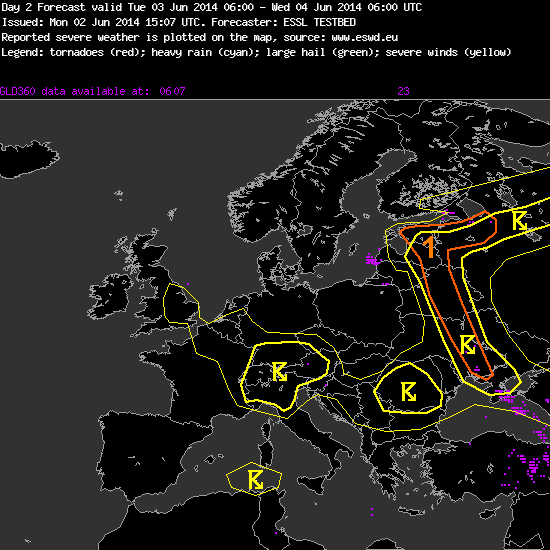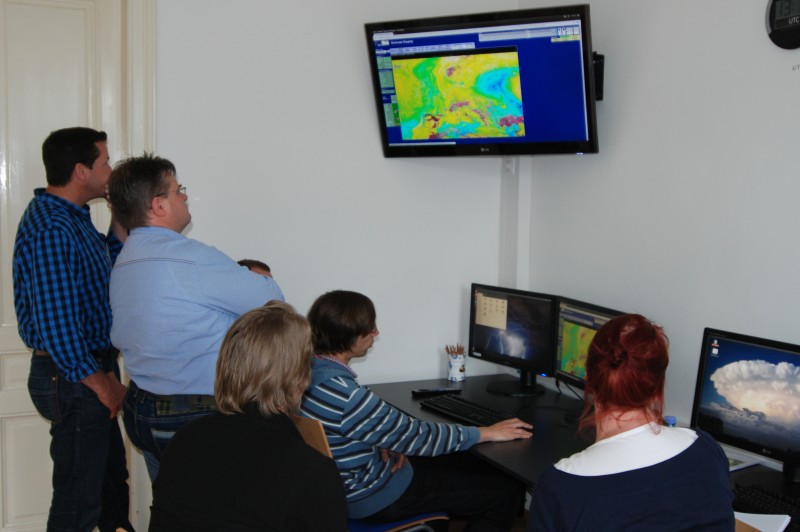Today more attention has been devoted to nowcasting products. Thomas Hengstebeck, our expert from DWD, presented remotely how mesocyclones can be detected with radar data. Since this year’s Testbed display offers experimental mesocyclone detection algorithms, this topic was important for our participants. In the afternoon, Pieter Groenemeijer also presented how these products could be used by showing a situation from 23rd May, when large hail up to 4.5cm was reported in Poland. 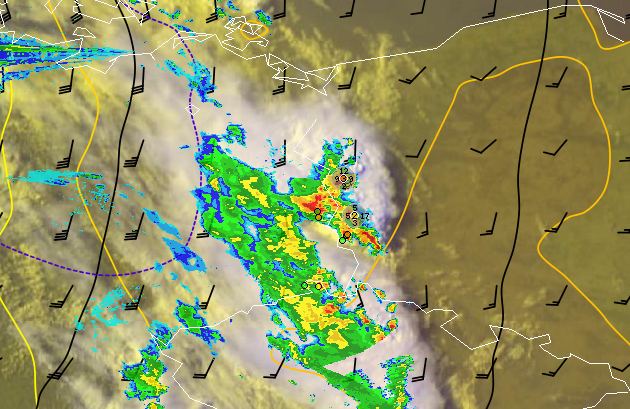
- Nowcasting composite of METEOSAT Rapid Scan E-View product, EuRadCOM radar reflectivity of the lowest level (pseudo-CAPPI), GFS 700hPa wind barbs and geopotential contours and mesocyclone detection algorithm (circles: see operations plan for description).
In the late afternoon, group with Georg Pistotnik prepared day3-5 forecast, while group of Christoph Gatzen was doing nowcasting. Today’s analysis also included good old style map drawing based on measurement data! 